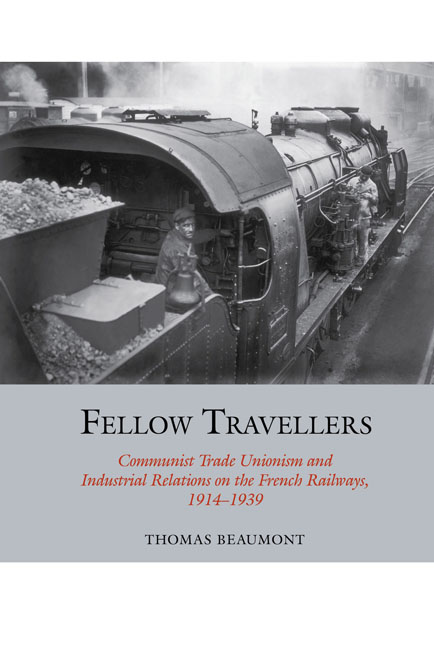 Fellow Travellers
Fellow Travellers The defeat of May 1920 had profound and long-lasting consequences. Though the cheminots continued to adhere to railway trade unions in large numbers, including the communist-led FNCU, the wave of industrial action had well and truly been broken. On the railways there was to be no return to the rank and file militancy of the period 1917–1920. For the remainder of the period, up to and including the Popular Front, railway workers were not to participate in any further significant strike action. Nor did the vast majority of cheminots demonstrate any inclination to participate in political demonstrations organised by the Communist Party. For Communist leaders, this new reality proved highly frustrating. Writing on the tenth anniversary of the May 1920 defeat, the leader of the communist railway Federation, Lucien Midol, complained of the impact of ‘ten years of passivity’ among the railway workers. Others were even more damning.
This chapter examines the new realities in cheminot trade union activity in the period after the general strike in May 1920 down to the mid-to-late 1920s. In particular, it sets the cheminots’ trade union activity firmly within the contexts of industrial relations in the railway sector. With the power of the labour movement seemingly broken, railway managers successfully saw off the threat of nationalisation and set about undoing the wartime gains that workers had made. Alongside this, a new generation of railway managers sought to develop a harmonious vision of railway work, based upon principles of shared professional competence and collective endeavour in the national interest as a means of depoliticising the railway workplace. In the face of these developments, and in the context of an ongoing struggle with the CGT for the overall support of the cheminots, the FNCU struggled to maintain a militant voice among France's railway workers.
Cheminot Unionism after 1921
A marked feature of cheminot trade unionism throughout the 1920s is the relative stability in levels of cheminot trade union membership, which remained high by French standards throughout the decade. Across France, and despite the defeats of May 1920, railway workers continued to hold union membership cards and pay their union dues.
To save this book to your Kindle, first ensure no-reply@cambridge.org is added to your Approved Personal Document E-mail List under your Personal Document Settings on the Manage Your Content and Devices page of your Amazon account. Then enter the ‘name’ part of your Kindle email address below. Find out more about saving to your Kindle.
Note you can select to save to either the @free.kindle.com or @kindle.com variations. ‘@free.kindle.com’ emails are free but can only be saved to your device when it is connected to wi-fi. ‘@kindle.com’ emails can be delivered even when you are not connected to wi-fi, but note that service fees apply.
Find out more about the Kindle Personal Document Service.
To save content items to your account, please confirm that you agree to abide by our usage policies. If this is the first time you use this feature, you will be asked to authorise Cambridge Core to connect with your account. Find out more about saving content to Dropbox.
To save content items to your account, please confirm that you agree to abide by our usage policies. If this is the first time you use this feature, you will be asked to authorise Cambridge Core to connect with your account. Find out more about saving content to Google Drive.